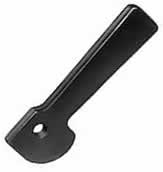
Cams are commonly found in engines, industrial printers, manufacturing machines and various mechanical equipment. While small in size, they play an important role in the function of these devices. What are cams exactly, and how do they work?
What Is a Cam?
A cam is a notched device that’s designed to convert rotary motion into linear motion. You can find them in different materials, sizes and styles. Nonetheless, they are all designed to convert rotary motion into linear motion. The rotary motion of a part will press against the cam, thus generating linear motion.
Common types of cams include the following:
- Barrel cam
- Face cam
- Disc cam
- Heart cam
How Cams Work
Cams are used in conjunction with a part that rotates, such as an engine’s camshaft. When running, an engine’s camshaft will turn. The camshaft will generate rotary motion. Cams are designed to convert rotary motion such as this into linear motion.
As a camshaft turns, it will strike one or more cams below it. Cams will move in response to these strikes. The camshaft will rotate continuously, whereas the cams will move down when struck by the camshaft. The up and down movement of the cams is linear motion.
Camshaft alone can’t generate linear motion. They are only capable of generating rotary motion. Cams are separate parts that solve this problem. They are installed alongside rotary parts, such as camshafts, so that they can convert the part’s rotary motion into linear motion.
Single vs Double Cams: What’s the Difference?
There are single cams as well as double cams. Single cams are the most common. They feature a single notch at the end of the base. Double cams, as you may have guessed, feature two notches at the end of the base.
Single cams and double cams serve the same purpose. They are both used with rotary parts, and they both convert the respective part’s rotary motion into linear motion. Double cams simply have two notches or “cams” rather than one.
In Conclusion
Cams are machinery parts that are designed to convert rotary motion into linear motion. They typically consist of a single, solid piece of material with either one or two notches at the end. As the part rotates, it will strike the cam. The cam will move up and down while converting the part’s rotary motion into linear motion.
